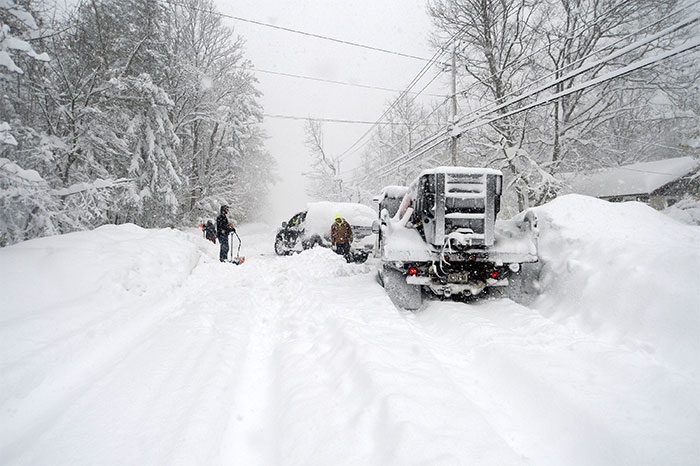Hundreds have been injured or killed across the globe as winter storms and heavy snowfall create hazardous conditions with poor visibility and unseasonably low temperatures.
According to The Guardian, on December 26, disaster management officials in Japan reported that heavy snowfall in various regions had resulted in 17 deaths and over 90 injuries, while also causing power outages in hundreds of homes.
Since last week, powerful winter snowstorms have brought significant snowfall to northern Japan. Hundreds of vehicles have been stranded on highways, delivery services have been delayed, and numerous fatalities have occurred.
Many of those affected suffered injuries from falls while clearing snow from rooftops or were buried under sudden snow slides from roofs.
Several areas in northeastern Japan reported snowfall amounts three times the seasonal average. Furthermore, heavy snow caused a transmission tower to collapse in northern Japan, leaving approximately 20,000 homes without electricity on Christmas morning.
In the United States, a “once-in-a-lifetime” snowstorm has resulted in at least 57 fatalities, including 27 in Erie County, western New York. County official Mark Poloncarz indicated that the death toll from this severe storm is expected to rise as snow continues to blanket the region, rendering many roads impassable.

Snow in Buffalo, New York.
Nationwide, temperatures have plummeted, and heavy snowfall has obstructed travel, leaving many people stranded in their homes.
Stretching from the area near Canada to the Rio Grande along the Mexico border, the storm has claimed at least 57 lives across 12 states. Many died from heart attacks while shoveling or blowing snow. Others were found deceased in their vehicles. At least one person in Niagara County died from carbon monoxide poisoning.
The intensity of this winter storm in the U.S. is unlike any seen before. In the Buffalo area, snowfall rates have reached an additional 5-8 cm per hour, accumulating to 12-30 cm, with some areas in Jefferson County and northern Lewis County seeing totals as high as 60 cm.
“Lake-effect” snow occurs when cold air passes over warmer, unfrozen lake waters, picking up moisture and warmth, which is then deposited into the lower atmosphere, leading to heavy snowfall.
In the United Kingdom, weather forecasters predict winds reaching nearly 70 miles per hour (112 km/h) will hit the country midweek. Following warnings of snow and ice, rainfall of up to 5mm per hour is also expected in the region. On New Year’s Eve, wind gusts are forecasted to peak at 109 km/h.
South Korea is also experiencing its coldest days of the season, with morning temperatures plummeting to minus 13.6 degrees Celsius in Seoul.
The Korea Meteorological Administration (KMA) reported that freezing temperatures accompanied by heavy snowfall have been observed in the southern regions, including Chungcheong and Jeolla, as well as the southern resort island of Jeju.
The weather agency indicated that inland and mountainous areas of Gangwon Province have recorded morning lows of minus 20 degrees Celsius and minus 26.3 degrees Celsius. Severe cold weather continues nationwide under the influence of high pressure, with forecasts indicating this will persist.
Additionally, heavy snowfall in the southern part of the country has caused traffic accidents, road closures, and flight cancellations.
Many schools in North Jeolla Province have decided to take measures to cope with the frigid weather by adjusting school hours or conducting remote classes.


















































